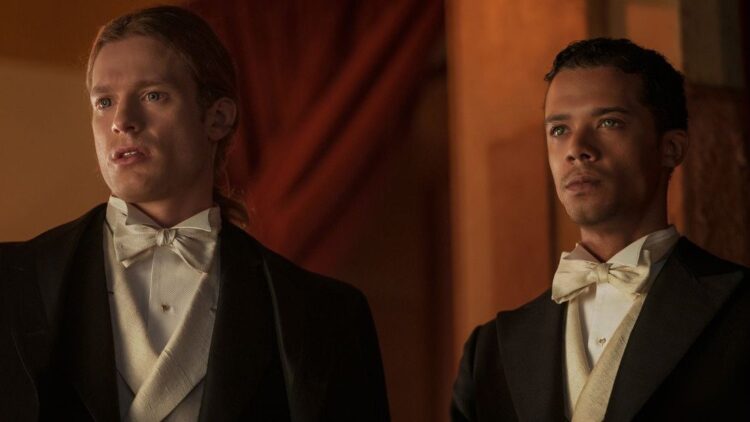In the late ’70s, author Anne Rice penned what would become her magnum opus, ” Interview With the Vampire .” The novel flew off the shelves and went on to inspire the 1994 film of the same name.
Now, almost 30 years later, a TV adaptation seeks to provide a new spin on Rice’s iconic tale. What’s even more unexpected, however, is that the new Interview With the Vampire TV isn’t just good — it’s actually way better than the movie .
Back in the early ’90s, Tom Cruise and Brad Pitt came together to star in ‘Interview With The Vampire: The Vampire Chronicles’.

As the title suggests, Interview with the Vampire chronicles the life of vampire Louis de Pointe du Lac, as he recalls his story of love, loneliness, and blood lust to the interviewer, Daniel Molloy.
The film also featured a young Kirsten Dunst in her first starring feature film role.

Kirsten expertly portrayed Claudia in the film — a five-year-old girl given the gift and curse of eternal life by the ruthless vampire, Lestat.
Earlier in 2022, AMC announced that a TV adaptation of ‘Interview With The Vampire’ would premiere in early October.

The network delivered on its promise, serving up a tasty buzzworthy new series that has not only exceeded expectations but has even managed to surpass its predecessor in every aspect.
Firstly, the ‘Rotten Tomatoes’ score for the TV adaptation surpasses that of the film.

The original film version was not a critical success and barely scraped 64% on the Average Tomatometer. On the other hand, AMC’s latest iteration clocks in at an impressive 98% .
Putting the reviews aside, the manner in which the film and TV show explore Lestat and Louis’ relationship differs greatly.

An interesting and gripping love story between men is all but absent in ’90s cinema. The 1994 film version hints that Lestat and Louis are romantically involved but it doesn’t dare to go further.
The TV version of ‘Interview With The Vampire’ doesn’t shy away from exploring their romance.

Louis and Lestat’s relationship is built on a foundation of sex, lust, tortured love, and hierarchal structures. They may be undead, but their romantic issues never stop being intrinsically human.
The decision to age-up Claudia from 5 to 14 also has several implications for the show’s plot.

Nothing against Kirsten Dunst’s performance, but when you’re portraying a five-year-old girl, there are certain limitations that come along with that. Mainly, Kirsten’s version is and forever will be a child.
Bailey Bass’ version is much more complex and allows a whole new dynamic to enter the equation.
The only thing worse than a school-aged child with a thirst for blood is a rebellious teenager in the thralls of puberty. The fact that she also happens to be a vampire is just icing on the cake.
Finally, the decision to portray Louis as a Black man changes the story’s landscape entirely.

In the 1994 film version, Louis is an 18th-century former slave owner. The TV version takes place in the midst of the COVID-19 pandemic and flashes back to the early 20th century of Jim Crow America.
The TV version is therefore able to explore elements of racism and classism that the movie never touched on.

Louis is reminded at every turn that he is an outsider — even by his lover and maker Lestat. By no means is Louis’ race the main focal point, but the series also doesn’t run away from attempting to tackle complex racial issues.
In conclusion, the TV version of ‘Interview With The Vampire’ seeks to take the audience deeper into the world author Anne Rice created.

Rice herself served as an executive producer up until her death in December 2021. The show is taking what the film started and elevating it beyond anything that was originally thought possible. In short, it really sucks — but in a good way.

















































